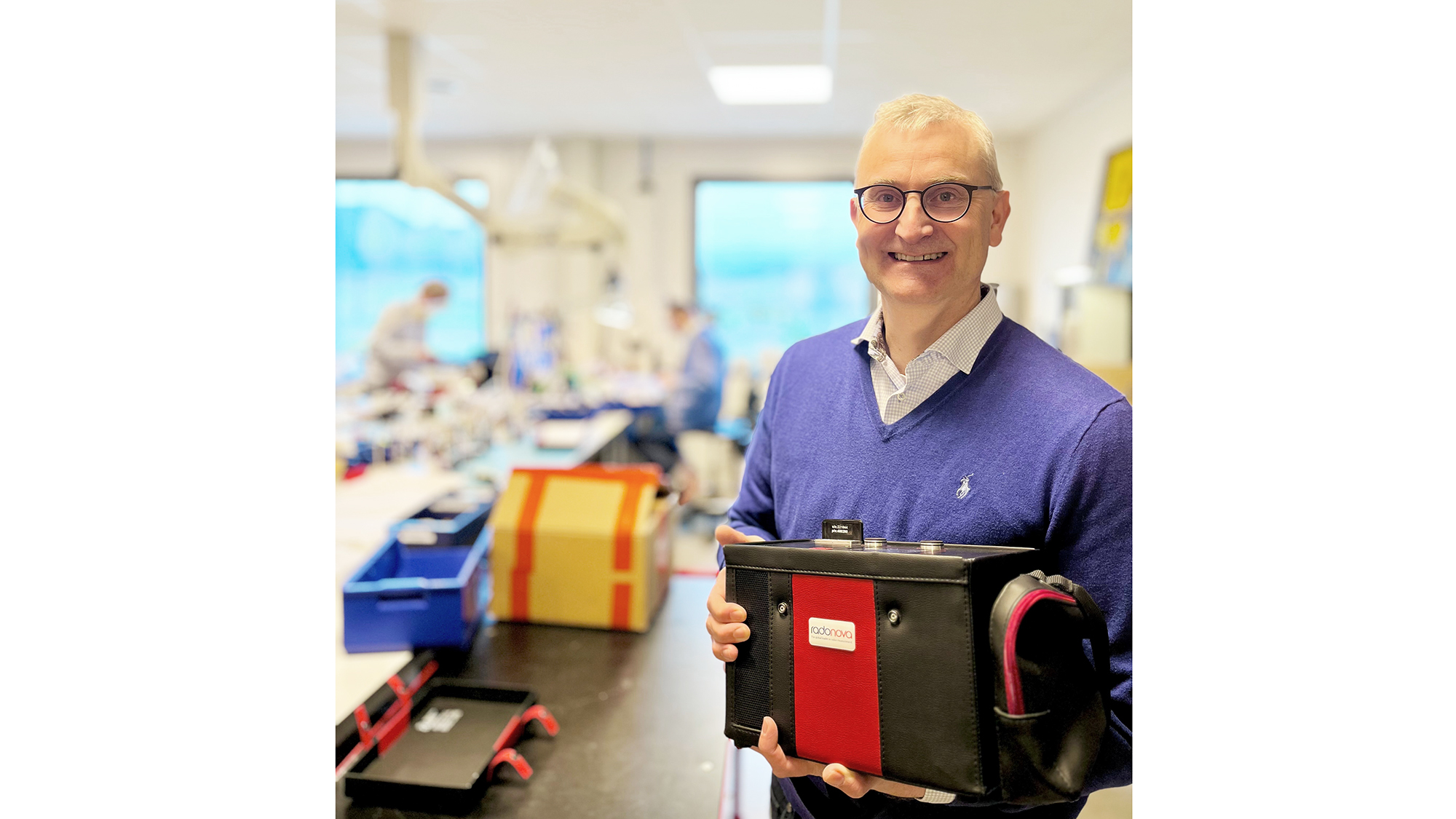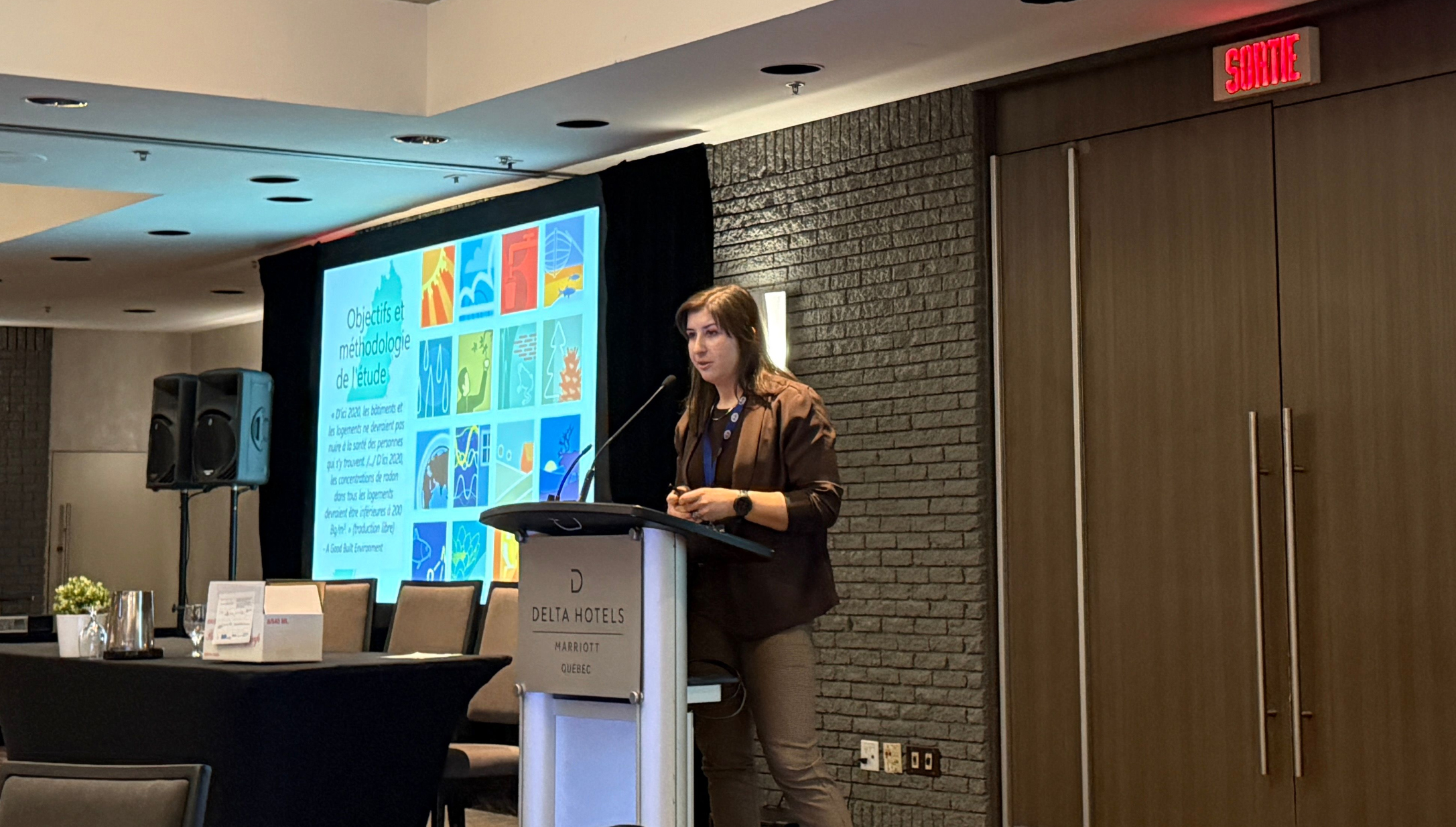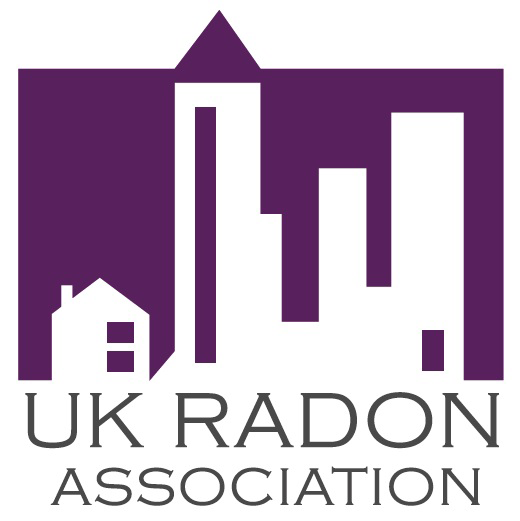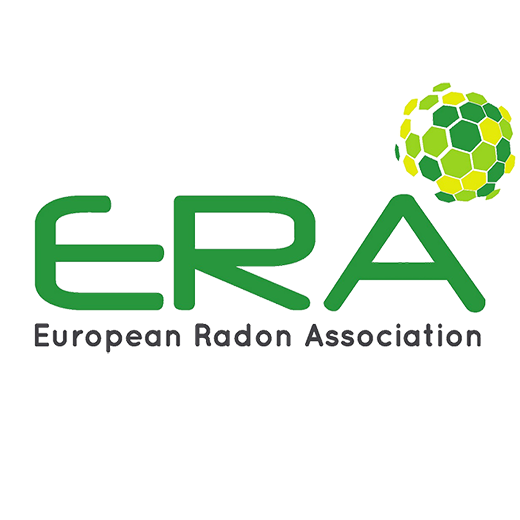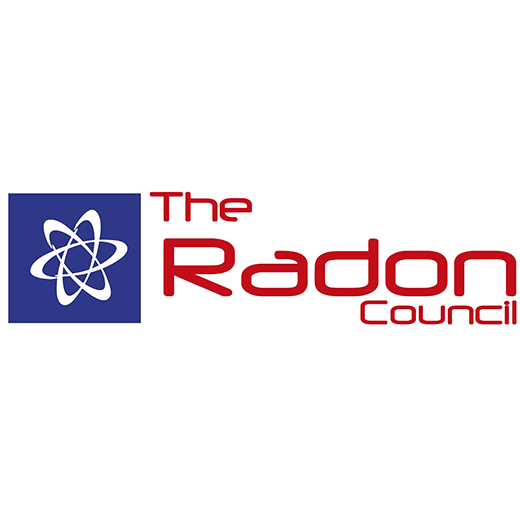At Radonova UK, we understand how radon can be something of a rabbit-hole. So we created the Rn86 A.B.C. – a comprehensive guide offering clear insight as to why radon matters, bust the jargon around it, and provide essential detection, prevention, and safety information. Recently serialised on our UK LinkedIn page, we hope you enjoy exploring the details.
A is for alpha particles. When any radioactive element breaks down, or decays, it generates energy in the form of alpha, beta, or gamma particles. Alpha particles are emitted by the decay of natural uranium, in the form of radon gas.
B is for becquerels. Radon gas concentration is measured in becquerels per cubic metre of air, or Bq/m3. Testing kits will indicate indoor radon levels using this unit of measurement; any concentration above 100 Bq/m3 could indicate a risk to health.
C is for Curie. Named after Pierre and Marie Curie, a curie (Ci) is a unit of radioactive measurement, equal to the number of disintegrations one gram of radium 226 undergoes in a single second. You can find out more about units of radon measurement in our blog!
D is for daughters. As radon decays, it produces a series of short-lived radioactive particles, known colloquially as daughters. These attach themselves to dust, water or aerosol particles, which in turn attach themselves to lung tissue when inhaled, emitting harmful alpha radiation as they decay.
E is for everywhere. Radon gas can be found everywhere, but as it’s colourless, odourless, and tasteless, it’s not unusual to be unaware of this. Outdoors it’s not an issue, but indoors it can accumulate to potentially hazardous levels if a building is poorly ventilated.
F is for foundations. A building’s foundations are the predominant means by which radon gas enters it, making basements in particular a high-priority area for testing. It’s a common myth that radon only affects older buildings but this isn’t the case; it can and will find its way into buildings of any age, type, or function.
G is for geological influence. Radon concentration levels are higher in certain geological areas, particularly those with a high uranium content such as granite formations.
H is for homes. As a modern society, we currently spend more time working, studying, or exercising at home than any previous generation. The health risks caused by radon exposure increase over longer periods of time; for this reason, it’s never been more important to conduct domestic radon testing. Doing so – by use of a validated detection kit – is a simple, affordable, and practical form of life insurance – for you and your family.
I is for ISO17025. ISO/IEC-17025 is the globally-recognised standard by which testing and calibration laboratories are able to prove their competence and declare reliable results, cultivating trust in their testing and procedures. Radonova is currently the only UK radon testing laboratory with accreditation to this standard.
J is for JERA, which stands for the Journal of the European Radon Association. This is a not-for-profit, open access journal which aims to publish, review and deliver the most up-to-date research and best practices for all things radon, offering a comprehensive source of the latest information.
K is for knowledge. Despite high levels being present in parts of the UK, radon remains something of a low-priority societal health consideration. Knowledge of any subject is empowerment; we believe that by increasing radon awareness, we can enable you to understand risk, make informed decisions, and take proactive measures to minimise exposure and protect your health.
L is for lungs. Radon gas affects the lungs when it is inhaled. Long-term exposure to high radon concentration is a leading cause of lung cancer after smoking, and is responsible for around 1100 deaths from the disease each year in the UK.
M is for mitigation. If you’ve found a high level of radon concentration in your home, school, or workplace, it may be necessary to carry out mitigation work to reduce it. There are two main methods of doing this: installation of a radon sump, or induction of positive pressure. Each case is different, even in seemingly identical buildings, so it’s advised to seek recommended action from a mitigation professional.
N is for naturally-occuring. Radon is one of the most common natural sources of radiation exposure, and it’s not going anywhere. Despite its short half-life, it will remain present on Earth for several billion more years!
O is for odourless. Unlike many other gases, you can’t smell radon to tell if it’s present or not – in fact it’s undetectable by all human senses. The only way to know how much of it is present is to conduct radon testing, using validated equipment.
P is for polonium. Two of the five daughters produced by radon decay are considered the most harmful: polonium 218 (Po-218) and polonium 214 (Po-214). Don’t be fooled by the fact that they’re both short-lived; their effect can be swift and brutal following long-term exposure.
Q is for quality. When you choose Radonova, you can be safe in the knowledge that not only are our radon testing instruments and laboratory procedures fully validated by UKHSA, we’re also the UK’s only supplier to have been accredited to ISO17025 standards. This guarantee of testing quality, accuracy, and precision is part of what makes us the global leader in radon measurement.
R is for reduction. It’s possible to reduce high radon levels in different ways – simple methods such as the sealing of cracks in walls and floors or the installation of ventilation systems can be effective remedies. However, it’s particularly important to conduct follow-up testing once this has been done, in order to accurately gauge any change in air quality.
S is for schools. Some scientists believe children and young people are at far greater risk from long-term radon exposure than adults, and since they spend long periods of time in schools, radon testing should be prioritised in their risk assessments.
T is for testing. The only way to know if radon gas is present within a building is to test for it using validated kits or instruments. Long-term exposure to radon gas is the greatest risk it can pose, therefore testing over a period of several months – or ideally a full year – is advised. However, short-term testing kits, which can provide snap-shot measurements, are available should results be required quickly.
U is for uranium. A naturally-occuring radioactive substance, uranium is ultimately the source of radon gas and it can be found in rocks and soil throughout the UK. As it decays underground, radon gas is produced, escaping into the air – and into buildings, through cracks in their foundations.
V is for validation. When testing for radon gas, it is essential to use a kit or instrument that’s been validated by the UK Health Security Agency. This is effectively a guarantee that the measurements taken and subsequent laboratory testing are of the highest precision and reliability. There are many consumer-grade electronic radon measuring devices available, which might be affordable, stylish, and convenient, but the accuracy of their measurements is currently under heavy scrutiny.
W is for workplace. The Health & Safety Act 1974 and Management of Health and Safety at Work Regulations 1999 requires employers to ensure the safety of staff and visitors to the workplace by means of risk assessments, which should include radon testing. This is particularly important if any underground areas (eg. basements, cellars, mines and so on) are included.
X is for x-rays, a different type of radiation and not to be confused with alpha. X-ray radiation has high penetration capability, passing through materials including the human body, hence why it’s commonly used for medical imagery, airport security and so on. Alpha radiation has very low penetration capability and can be stopped by human tissue, causing risks to health when absorbed, inhaled, or ingested.
Y is for yearly testing. Since radon gas levels fluctuate constantly, it’s advisable to test for them every year, especially in high-risk areas. The longer the testing timescale, the more accurate the measurement will be – our long-term Radtrak³® passive detectors can be used for up to 365 days at a time.
Z is for zone. Radon levels vary from one zone to another, depending on its geology. You can use the UK radon map to find the risk level in any given area. It’s important to note that radon maps should not be used as a definitive method of radon detection, as they can’t indicate levels present indoors!
We hope you found our guide useful and informative. If you have any queries about the subjects it’s covered, any of our products, or anything else concerning radon, please don’t hesitate to contact us.
Radonova UK
[activecampaign form=3 css=1]

